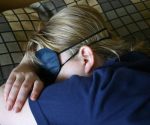Axolotl: The amphibian that writes its own body map

Imagine losing an arm in an accident, only to grow it back exactly as it was before, right down to the fingerprints. Such regenerative power is standard fare for comic-book superheroes (Marvel’s Deadpool comes to mind) but remains firmly outside the realm of human biology. Yet in nature, there’s an animal with just such superpowers — the axolotl, a curious salamander native to Mexican lakes, recognisable by its feathery red gills.

If you’re fascinated by geckos dropping their tails, you will be amazed by the axolotls. These creatures can repeatedly regenerate entire limbs, hearts, lungs, and even parts of their brains and spinal cords. Biologists have long marveled at these amphibians’ incredible capacity for self-renewal, hoping to unlock secrets that might one day help humans heal better too.
Scientists have known about axolotl regeneration for over a century, but exactly how their new limbs grow back perfectly without scars or mismatched shapes remained mysterious. A recent research article published in Nature shines new light on the puzzle. Axolotl cells can remember where they belong in the body, and under the right conditions, this positional memory can be rewritten.
Think of your cells as having an internal GPS, knowing exactly where they’re located along the body’s major highways — from front to back, top to bottom, and side to side. When an axolotl loses a limb, cells near the wound site rapidly multiply and form a special structure called a blastema (perhaps the most fascinating structure in regeneration biology). Here, different cells mingle, each “remembering” its original position in exquisite detail. Together, these cells precisely regrow what’s missing, seamlessly reconnecting the old with the new.
But how exactly do cells hold onto this positional memory? The new research shows that it involves a conversation between a gene called Hand2 and a signaling protein called Sonic hedgehog (yes, biologists named it after the video-game character).
Here’s how the conversation goes. Cells on the back side of the limb quietly produce Hand2 throughout their lives. When the limb is injured, these cells crank up Hand2, which in turn activates Sonic hedgehog. But Sonic hedgehog doesn’t simply pass along the message; it also reinforces Hand2, locking the cells into a stable identity.
Scientists found they could hack this conversation. By briefly exposing front-side cells (which usually don’t participate in this Hand2–Sonic hedgehog dialogue) to Sonic hedgehog during limb regrowth, researchers permanently convinced these cells to switch sides and adopt a back-side identity. It’s as if the cells received new instructions that changed their identity.
Astonishingly, even after these limbs had grown back completely, the reprogrammed cells remembered their new identity. When researchers amputated the limb again (I know it sounds cruel, but these salamanders are built for this), these cells readily turned on Sonic hedgehog once more, maintaining their newly assigned positional identity through multiple rounds of regeneration.
But here’s a curious biological quirk that reveals how evolution works: this cellular memory rewrite only works reliably in one direction (from front to back). Scientists call this “posterior dominance”, and it’s like trying to overwrite a stubbornly ingrained habit.
Beyond the sheer coolness factor, understanding how positional memory works could one day allow doctors to grow replacement tissues that perfectly match their surroundings, help people heal from severe injuries without scars, or repair complicated wounds with unprecedented precision.
Imagine burn victims getting skin grafts remembering how to maintain proper skin architecture over time. Picture trauma patients regenerating lost muscle tissue that knows how to wire itself back into the body’s existing systems.
The discovery also challenges our understanding of memory. We usually think of memory as a feature of our brains, but it turns out cells throughout our bodies store memories, encoded in genes and proteins rather than neural networks. And these cellular memories can be edited, but only if you speak their molecular language fluently.
What makes this research particularly elegant is how it connects early development with adult regeneration. The same molecular circuits that help pattern limbs when salamanders are developing as embryos get recycled later in life for regeneration. This is biological efficiency at its finest. After all, why invent new systems when you can repurpose the perfectly good ones you already have?
These Mexican salamanders (sadly threatened in their native habitats) continue to be our most valuable teachers in understanding regeneration. They’ve spent millions of years perfecting the art of rebuilding themselves with the precision of master craftsmen, and we’re finally learning to read their instruction manual.
Regrowing human limbs might still be years away but understanding how cells remember and rewrite their identities brings us dramatically closer. More immediately, this research could revolutionize wound healing and tissue engineering. Instead of hoping transplanted cells will figure things out on their own, we might give them GPS coordinates telling them exactly where they belong and what they should become.
Anirban Mahapatra is a scientist and author, most recently of When The Drugs Don’t Work: The Hidden Pandemic That Could End Medicine. The views expressed are personal.















